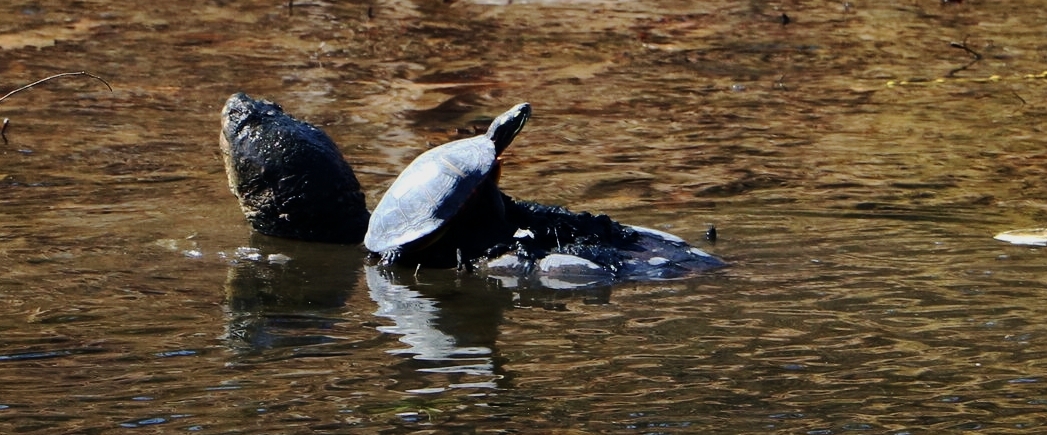Species #33: Loggerhead sea turtle (Caretta caretta)
Species #34: Green sea turtle (Chelonia mydas)
Species #35: Leatherback sea turtle (Dermochelys coriacea)
Location: Jupiter Island (Martin County, Florida)
Date: 3 June 2017
Post by Charles H. Miller
It had rained most of the day and the night was humid and breezy. George L. Heinrich and I were on a crescent moonlit beach at Blowing Rocks Preserve (Martin County, Florida), waiting to meet up with Chris Johnson and Kelly Martin of Florida Leatherbacks Inc. (www.floridaleatherbacks.com). Martin County hosts the highest density leatherback sea turtle (Dermochelys coriacea) nesting beach in the state of Florida. This conservation NGO has been studying turtles on this beach since 2014, and since that time has documented 370 individual nesting leatherbacks, with more than 800 encounters.
George and I had spent the previous three days searching for hawksbill sea turtles (Eretmochelys imbricata) during two snorkel trips out to the beautiful reefs of Dry Rocks, the Elbow, and Molasses Reef in the Florida Keys. After braving 3-4 foot seas, we, unfortunately, did not come up with our target species and George was left with his first “revisit” of The Big Turtle Year. Though our search for hawksbills was unsuccessful, we did marvel at many other amazing south Florida species, both natives and non-natives, including Florida Key deer (Odocoileus virginianus clavium), Florida tree snails (Liguus fasciatus), white-crowned pigeons (Patagioenas leucocephala), Florida red-bellied cooters (Pseudemys nelsoni), Florida softshell turtles (Apalone ferox), American alligators (Alligator mississippiensis), and American crocodiles (Crocodylus acutus). We also saw numerous green iguanas (Iguana iguana) and northern curlytail lizards (Leiocephalus carinatus armouri), and searched for the infamous Burmese python (Python bivittatus) that has ravaged the Florida Everglades, but came up empty-handed.
Chris and Kelly assured us that both loggerhead sea turtles (Caretta caretta) and green sea turtles (Chelonia mydas) would not be a problem since they are common nesters along the 13 mile stretch of nesting beach that they patrol. However, they were admittedly concerned about the likelihood of finding a leatherback; it was late in their nesting season and they were having an off year. George and I hopped on to the rear racks of their 4-wheeler beach patrol vehicles and we rode off into the night. The beach was well lit by a small amount of moonlight and there was an incoming tide, and almost immediately we were treated to our first nesting loggerhead. The indecisive mother performed a false crawl, leaving the water only a short way before turning around and heading back to the ocean to find a more suitable piece of beach to nest.
Loggerheads are named for their oversized heads, which they use to crush their prey: mollusks and crustaceans, and are the most common species of nesting sea turtle in Florida. Florida accounts for approximately 90 percent of the nesting activity of the Northwest Atlantic loggerhead aggregation, the largest remaining in the world.
A short time later, we were able to witness our first green sea turtle on her way back to the ocean after completing her nesting. Upon approaching her for a closer look, she really hit the gas and rapidly (for a sea turtle on land) made moves towards her ocean home. Green sea turtles, named for their green body fat, were one of the hardest hit sea turtles as a source of meat. Key West was once a major processing center for the green sea turtle meat trade, with as many as 15,000 turtles being shipped to England annually in the late 1800s. Even my own mother had eaten green sea turtle when she was younger and before they were protected from such trade. These turtles gain their green body fat coloration from their mainly vegetarian diet as adults, eating sea grasses and algae.
Less than an hour into our beach ride with Chris and Kelly, we came across a huge turtle track at the end of which was a leatherback sea turtle that was finishing up her nesting process. Kelly informed me that her name was Cher and that this was her sixth documented nesting event of the season, and her first year of being documented in their study. Leatherbacks are the largest of the seven living species of sea turtles, reaching an average 6 feet in length and weighing from 500 to 1,500 pounds. The largest leatherback on record was nearly 10 feet long and weighed more than 2,000 pounds. Leatherbacks, named for their unique leathery skin covered shells, are the deepest diving of the sea turtles, capable of descending more than 3,000 feet, and documented traveling more than 3,000 miles from their nesting beach. They are found throughout the Atlantic, Pacific, and Indian oceans, as far north as Alaska and Labrador. Researchers have found that leatherbacks are able to regulate their body temperature so that they can survive in cold waters. Their diet consists primarily of jellyfish.
We watched Cher complete her nesting ritual — potentially as old as the dinosaurs — as she flopped her long flippers around and tapped her massive shell from side to side to pat down the sand, creating a massive pit around her nest hole, as she took in deep laborious breaths, then, only when she was satisfied, she suddenly decided she was done, and she headed back to the ocean. Hopefully, in 2-3 years she will return again to this nesting beach and repeat the process, giving her offspring a chance to continue their species.





































































































